#968 Ultra-Fast Pulsar February 11, 1998
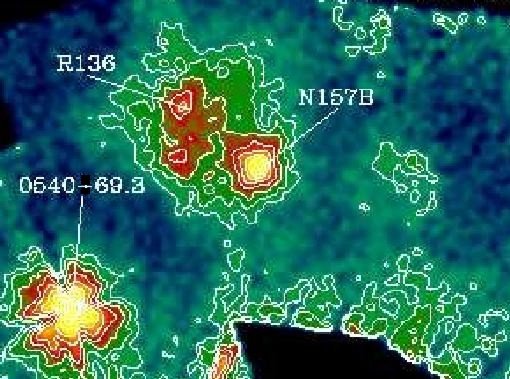
“Pulsars are rotating neutron stars, born in the violent crucibles of supernova explosions. Like cosmic lighthouses, beams of radiation from surface hotspots sweep past our viewpoint creating pulses which reveal the rotation rates of these incredibly dense stellar corpses. The most famous pulsar of all is found in the nearby supernova remnant, the Crab Nebula. The Crab's young pulsar is fast. Rotating at 33 times a second, its radiation energizes the surrounding gaseous stellar debris. But using archival observations from orbiting X-ray telescopes, astronomers have recently identified another "Crab-like" pulsar that is even faster. Located in the Large Magellanic Cloud (LMC), X-ray pulses from this newly discovered pulsar, in the supernova remnant N157B, indicate an even faster rotation rate - 62 times a second - making it the fastest known pulsar associated with a supernova remnant. This contoured, false color X-ray image of a portion of the LMC shows the location of N157B along with the core of the nearby hot star cluster R136, and the site of another Crab-like pulsar in SNR 0540-69.3 (rotating a mere 20 times a second). The image is about 1,500 light-years across."
Copyright: Public domain
#969 In A Grand Canyon On Mars February 12, 1998
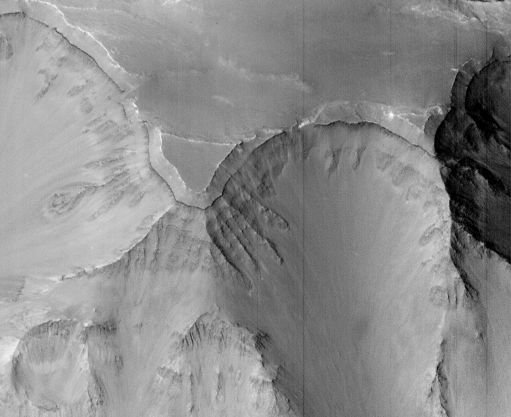
“In a grand canyon on Mars, steep slopes fall away from a smooth plateau revealing striking layered rock formations. The canyon is part of the Valles Marineris, a 2,500 mile long system of canyons cutting across the Martian equator. This view, recorded on January 1 by the orbiting Mars Global Surveyor shows a small portion of Valles Marineris in amazing detail. The image is about 6 miles wide and high resolution versions show features as small as 20 feet across. What processes caused the layering? In the Grand Canyon on planet Earth, sedimentary processes have resulted in spectacular rock layers. But similar layers of rock in canyons of the Hawaiian Islands were created by volcanoes. Regardless of the origin of layering on Mars, its extent suggests that early Mars was geologically active and complex."
Copyright: Public domain
#970 Explorer I February 13, 1998
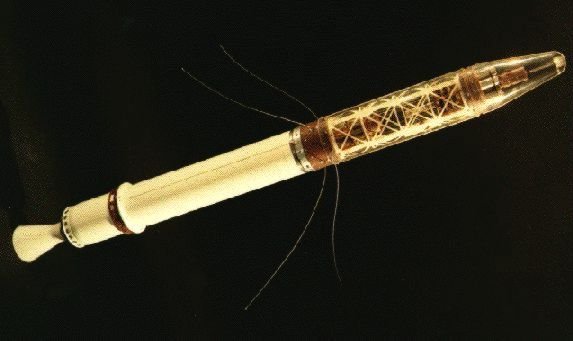
“Inaugurating the era of space exploration for the US, the First Explorer was launched into Earth orbit forty years ago (February 1, 1958) by the Army Ballistic Missle Agency. The Explorer I satellite weighed about 30 pounds, was 6 feet long, 6 inches in diameter and consisted of batteries, transmitters, and scientific instrumentation built into the fourth stage of a Jupiter-C rocket. Foreshadowing NASA and the adventurous and successful Explorer Program, Explorer I bolstered national prestige in the wake of Sputnik. The satellite also contributed to a spectacular scientific bonanza - the discovery of Earth-girdling belts of magnetically trapped charged particles now known as the Van Allen Radiation Belts."
Copyright: Public domain
#971 The Rosette Nebula February 14, 1998
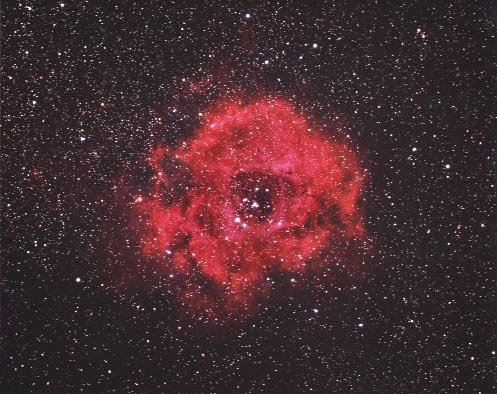
“Would the Rosette Nebula by any other name look as sweet? The bland New General Catalog designation of NGC 2237 doesn't appear to diminish the appearance of the this flowery emission nebula. Inside the nebula lies an open cluster of bright young stars designated NGC 2244. These stars recently formed from the nebular material and their stellar "wind" has cleared a hole in the nebula's center, insulated by a layer of dust and hot gas. Ultraviolet light from the hot cluster stars causes the surrounding nebula to glow."
Copyright: G. Greaney
#972 Stars Without Galaxies February 15, 1998
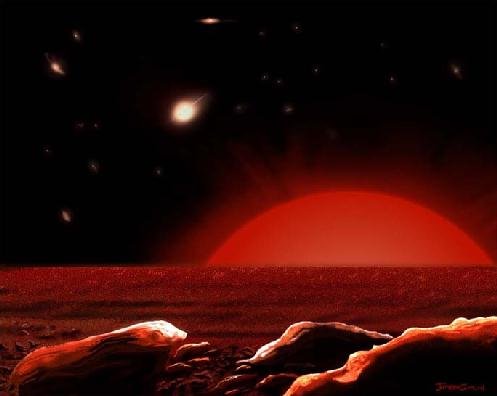
“Galaxies are made up of stars, but are all stars found within galaxies? Using the Hubble Space Telescope, researchers exploring the Virgo Cluster of galaxies have now found about 600 red giant stars adrift in intergalactic space. Above is an artist's vision of the sky from a hypothetical planet of such a lonely sun. The night sky on a world orbiting an intergalactic star would be a stark contrast to Earth's - which features a spectacle of stars, all members of our own Milky Way galaxy. As suggested by the illustration, a setting swollen red sun would leave behind a dark sky flecked only with faint, fuzzy, apparitions of Virgo Cluster galaxies. Possibly ejected from their home galaxies during galaxy-galaxy collisions, these isolated suns may well represent part of a large, previously unseen stellar population, filling the space between Virgo Cluster galaxies."
Copyright: Public domain
#973 Sagittarius Dwarf to Collide with Milky Way February 16, 1998
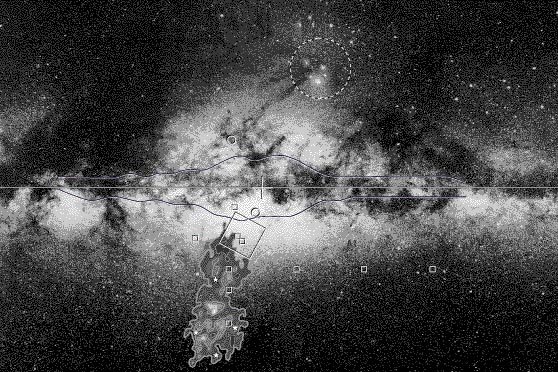
“Our Galaxy is being invaded. Recent observations indicate that in the next 100 million years, the Sagittarius Dwarf galaxy will move though the disk of our own Milky Way Galaxy yet again . The Sagittarius Dwarf (Sgr), shown as the extended irregular shape below the Galactic Center, is the closest of 9 known small dwarf spheroidal galaxies that orbit our Galaxy. Don't worry, our Galaxy is not in danger, but no such assurances are issued for the Sagittarius Dwarf: the intense gravitational tidal forces might pull it apart. Oddly, however, Sgr's orbit indicates that is has been through our Galaxy several times before, and survived! One possibility is that Sgr contains a great deal of low-density dark matter that hold it together gravitationally during these collisions."
Copyright: Public domain
#974 Shocked by Supernova 1987a February 17, 1998

“even years ago the brightest supernova of modern times was recorded. Now the expanding debris from this tremendous stellar explosion is seen to be crashing into previously expelled material. The onset of this collision is shown by the arrow in the above picture as the yellow spot on the interior of the ring. Although the collision is occurring at speeds near 60 million km/hour, it will appear to take years due to the vast distances involved. As the supernova blast wave moves out, it shock-heats any gas it encounters, causing it to glow. Astronomers are thus hopeful that the blast wave will illuminate the interesting past of SN 1987a, and perhaps provide more clues about the origins of the mysterious rings."
Copyright: Public domain
Upvote! Resteem! Comment! As you like it! Thank you for attention!